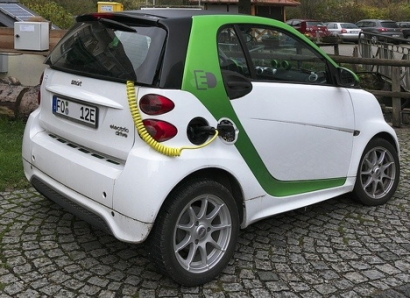
Wireless charging for electric vehicles is today’s most cutting-edge technology. Why? It is the most efficient, futuristic, scalable–in short–awesome alternative we have to gasoline. While tech giants such as Uber are placing their bets on autonomous cars, major key players such as Jaguar Land Rover are mass-producing electric cars. What’s more, Fordis releasing fully-electric SUV and other market players are on the verge of joining the trend.
The more electric cars roam around the city, the more will be the demand for wireless charging. The global wireless electric vehicle charging market is expected to reach $1.48 billion by 2025, growing at a colossal CAGR of 21.8% from 2018 to 2025.This rapid growth is due to rise in sales of electric vehicles and increase in demand for energy-efficient sources as an alternative fuel.
What is wireless charging for an electric vehicle?
The wireless charging for electric vehicles involves inductive charging technology. It is quite similar to how charging of wireless phones works, just on a remarkably larger scale.
For wireless charging, the car must be in proximity to the charging station. The technology is still at the development stage asthe efficiency of energy transfer as well as the distance between the charging coil and car is not sufficiently large.
In the ideal scenario, vehicles would get charged while it is moving or it is parked. This way, the users will not have to wait till the car is getting charge and the number of charging stations would reduce significantly.
Why choose wireless charging instead of wired charging stations?
Although getting rid of charging wires is the most attractive advantage of wireless charging electric vehicles, there are other silent factors as well. One of them is complete autonomy. The collective amount of money that tech giants have spent on R&D of driverless vehicles is in trillions. In the future, if the need to frequently stop for charging the autonomous vehicles has to stop,the use of wireless charging isa prerequisite.
Apart from this, an increased in wireless charging points is bound to reduce the battery size of the vehicle. This, in turn, would cut down costs as well as the weight of the vehicle.
However, there are a few challenges
Despite the fact that wireless charging would be a must-have for electric vehicles, there are a few potential drawbacks that need to be considered.
According to various studies, wireless charging for electric vehicles has potential for 90–93% energy efficiency. However, there would be a loss of energy, which would be significant on a large scale.
If we consider that wireless charging on the go, we need to develop infrastructure to support it. Moreover, it would be restricted to densely populated areas such as metro cities and a user would have to limit the travel to predefined locations.
The wireless charging for electric vehicles demands inductive charging technology, which creates magnetic fields that might be harmful to our health. However, there are not enough studies to support this statement.
Recent advancements in the industry
Currently, very limited number of countries are working on wireless charging for electric vehicles. Recently, the director of the Joint Transportation Research Program at Purdue University announced a collaboration with Germany-based Magment Concrete Wireless Power. The partnership aims to fulfill the future needs of electric vehicles including wireless charging.
As per the professor of civil engineering at Purdue, Darcy Bullock, the number of electric vehicles on the road is expected to increase and similarly,the country’s infrastructure should improve as well. He believes that this partnership would help them focus, especially on smaller forms of transportation and the results could be applied for larger vehicles.
On the other hand, Link Transit and Momentum Dynamics Corporation extended their partnership through a five-year contract. Prior to this, they had successfully introduced and demonstrated the operation of wireless charging of buses.
With this extended partnership, Momentum Dynamics would offer novel charging systems and services for an electric fleet of Link Transit. Keeping in mindthe current state of Washington, there is a dire need to take firm steps to reduce carbon emission. To do this, both of the companies plan to migrate emission-free buses in the coming years.
What’s more, the fleet electrification plan proposed by Link Transit involves route expansion, upgradation of current electric vehicles, and rise in on-route frequency of service. Thus, the company is expected to add around 10 new electric buses in 2020 and all of them would include Momentum Dynamics’ wireless charging receivers.
These are pretty exciting times for the electric vehicle industry with the plethora of technologies being deployed by leading manufacturers as well as startups. Wireless charging is not an easy target to achievebut has the potential to transform the current mode of transportation.
For Information: Allied Market Research
Swamini Kulkarni holds a bachelor’s degree in Instrumentation and control engineering from Pune University, and works as a content writer. She is deeply fascinated by the impact of technology on human life, and loves to talk about science and mythology. When she is not glued to the computer, she loves to read, travel, and spend time thinking how she could read and travel more often.

